From the acclaimed Ojibwe author and professor Anton Treuer comes an essential book of questions and answers for Native and non-Native young readers alike. Ranging from “Why is there such a fuss about nonnative people wearing Indian costumes for Halloween?” to “Why is it called a ‘traditional Indian fry bread taco’?” to “What’s it like for natives who don’t look native?” to “Why are Indians so often imagined rather than understood?”, and beyond, Everything You Wanted to Know About Indians But Were Afraid to Ask (Young Readers Edition) does exactly what its title says for young readers, in a style consistently thoughtful, personal and engaging.
Ojibwe
Nibi Is Water
A first conversation about the importance of Nibi, which means water in Anishinaabemowin (Ojibwe), and our role to thank, respect, love, and protect it. Babies and toddlers can follow Nibi as it rains and snows, splashes or rows, drips and sips.
The Water Walker
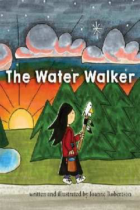
This is the story of a determined Ojibwe Nokomis (Grandmother) Josephine-ba Mandamin and her great love for Nibi (water). Nokomis walked to raise awareness of our need to protect Nibi for future generations, and for all life on the planet. She, along with other women, men, and youth, have walked around all the Great Lakes from the four salt waters, or oceans, to Lake Superior. The walks are full of challenges, and by her example Josephine-ba invites us all to take up our responsibility to protect our water, the giver of life, and to protect our planet for all generations.
Bowwow Powwow: Bagosenjige-Niimi’idim
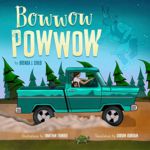
When Uncle and Windy Girl attend a powwow, Windy watches the dancers and listens to the singers. She eats tasty food and joins family and friends around the campfire. Later, Windy falls asleep under the stars. Uncle’s stories inspire visions in her head: a bowwow powwow, where all the dancers are dogs. In these magical scenes, Windy sees veterans in a Grand Entry, and a visiting drum group, and traditional dancers, grass dancers, and jingle-dress dancers–all with telltale ears and paws and tails. All celebrating in song and dance. All attesting to the wonder of the powwow.
Adventures of Rabbit and Bear Paws: The Voyageurs
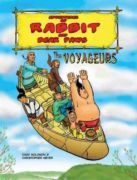
Set in the 18th century colonized North America, we follow the story of two mischievous Ojibwa brothers as they play pranks and have amazing adventures using a traditional Ojibwa medicine (spirit powder) that transforms them into animals for a short time.
Adventures Of Rabbit and Bear Paws Vol 1: The Sugar Bush
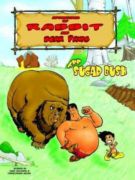
Adventures of Rabbit and Bear Paws is set in 18th Century colonized North America. We follow the story of two mischievous Ojibwa brothers as they play pranks and have amazing adventures using a traditional Ojibwa medicine (spirit powder) that transforms them into animals for a short time.
Adventures of Rabbit and Bear Paws: Bear Walker

A winter’s day full of fun and excitement takes an unexpected turn when our young heroes, Rabbit and Bear Paws, cross paths with a mysterious and powerful healer known as the Bear Walker. What does this man want from our boys, and what secret is he hiding?
Adventures of Rabbit and Bear Paws: True Hearts
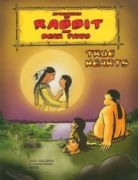
What is LOVE? Is love the respect you have for your parents, family, friends and all beings? Or is it something more? What Rabbit loves to do the most is play pranks with his brother Bear Paws on family and friends. Rabbit is the best at playing pranks on others – until he meets his equal in a young girl called Strawberry. Is it young love at first sight?
The Round House
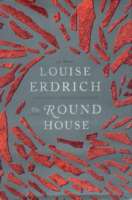
One Sunday in the springof 1988, a woman living on a reservation in North Dakota is attacked. The details of the crime are slow to surface as Geraldine Coutts is traumatized and reluctant to relive or reveal what happened, either to the police or to her husband, Bazil, and thirteen-year-old son, Joe. In one day, Joe’s life is irrevocably transformed. He tries to heal his mother, but she will not leave her bed and slips into an abyss of solitude. Increasingly alone, Joe finds himself thrust prematurely into an adult world for which he is ill prepared. While his father, who is a tribal judge, endeavors to wrest justice from a situation that defies his efforts, Joe becomes frustrated with the official investigation and sets out with his trusted friends, Cappy, Zack, and Angus, to get some answers of his own. Their quest takes them first to the Round House, a sacred space and place of worship for the Ojibwe. And this is only the beginning. Written with undeniable urgency, and illuminating the harsh realities of contemporary life in a community where Ojibwe and white live uneasily together.
Mishomish Book : The Voice of the Ojibway
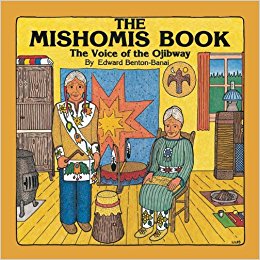 The Ojibway is one of the largest groups of Native Americans, belonging to the Anishinabe people of the northern United States and Canada. This book includes Ojibway creation stories and legends, the origin and importance of the Ojibway family structure and clan system, the Midewiwin religion, the construction and use of the water drum and sweat lodge, and modern Ojibway history.
The Ojibway is one of the largest groups of Native Americans, belonging to the Anishinabe people of the northern United States and Canada. This book includes Ojibway creation stories and legends, the origin and importance of the Ojibway family structure and clan system, the Midewiwin religion, the construction and use of the water drum and sweat lodge, and modern Ojibway history.
